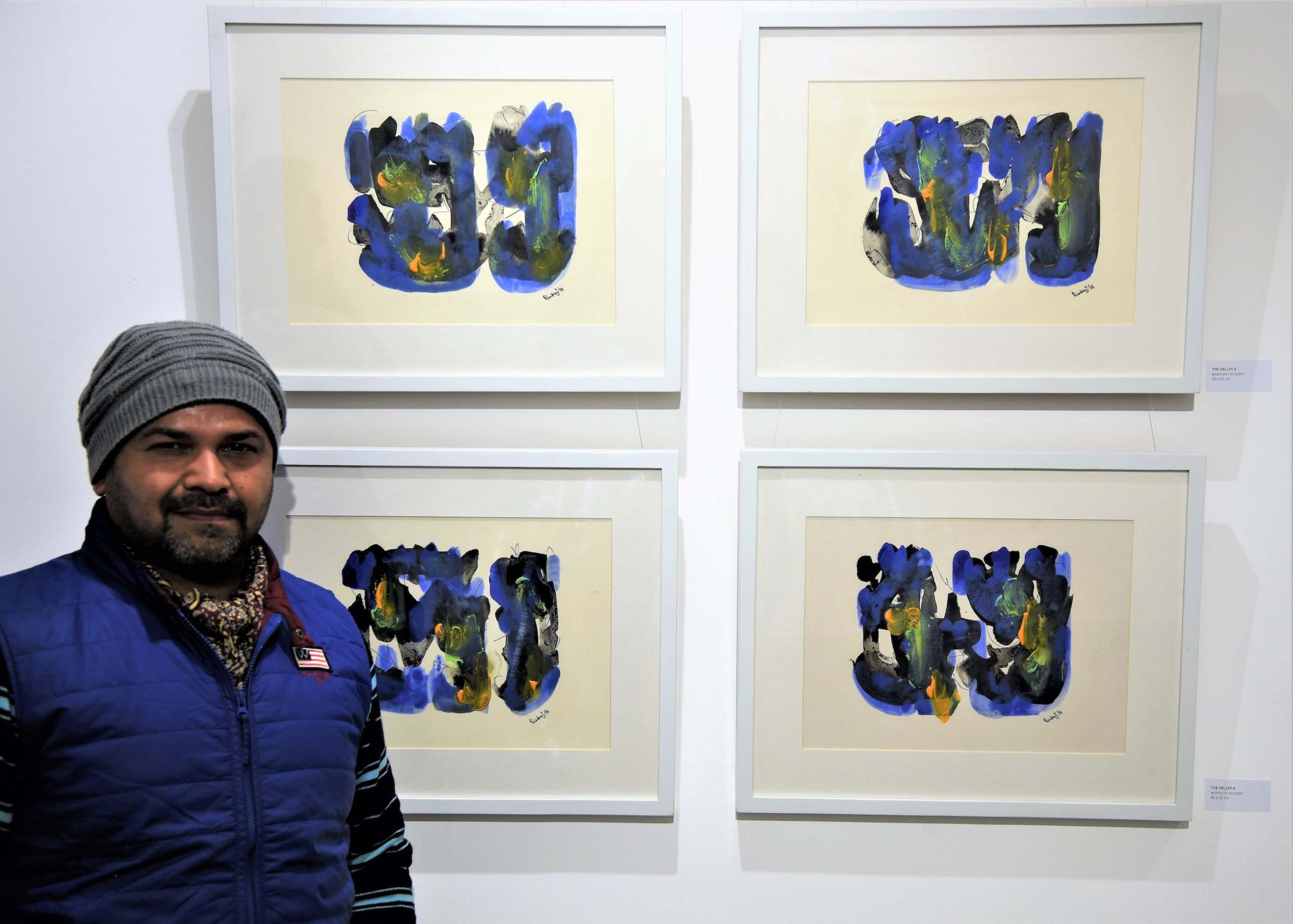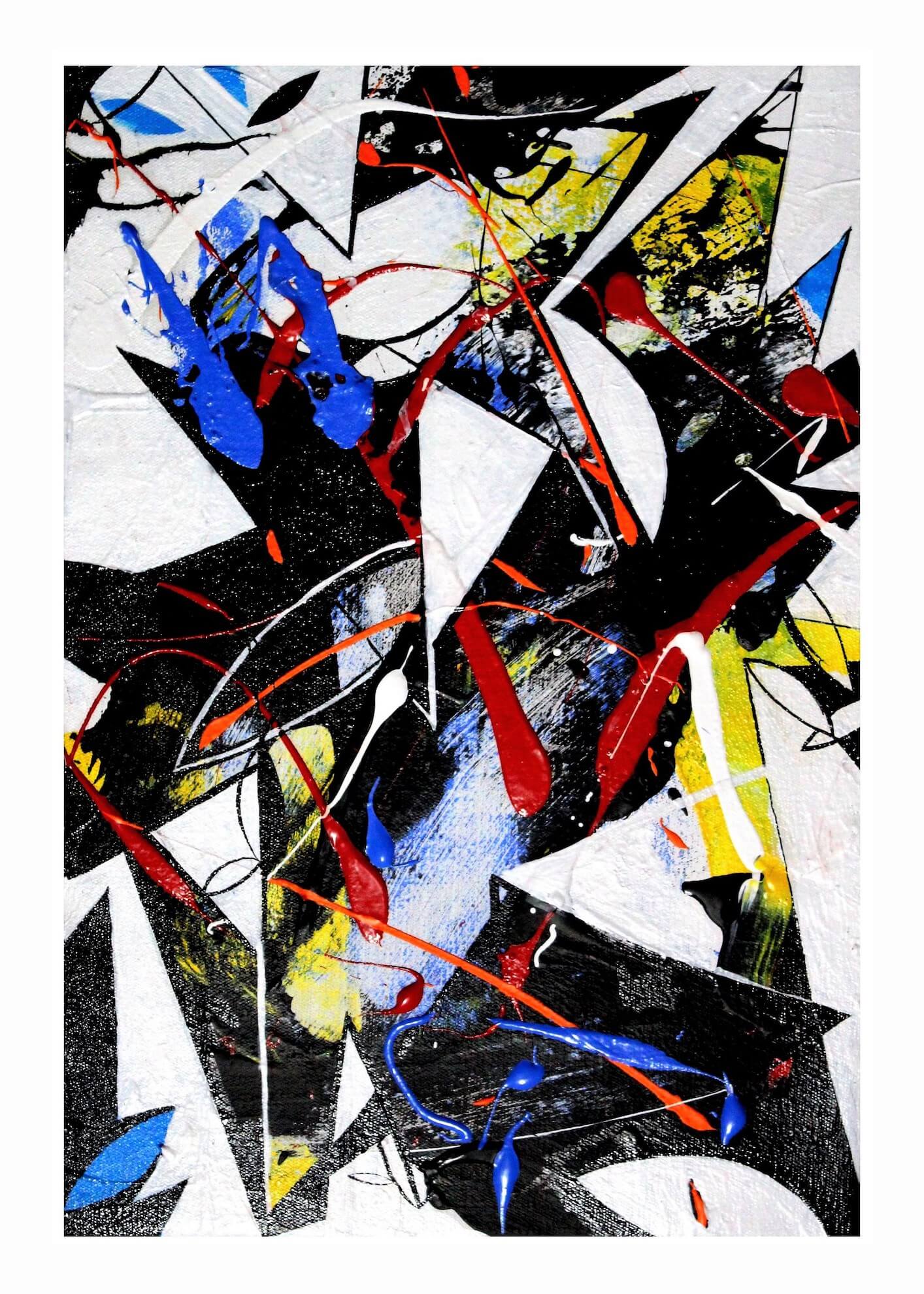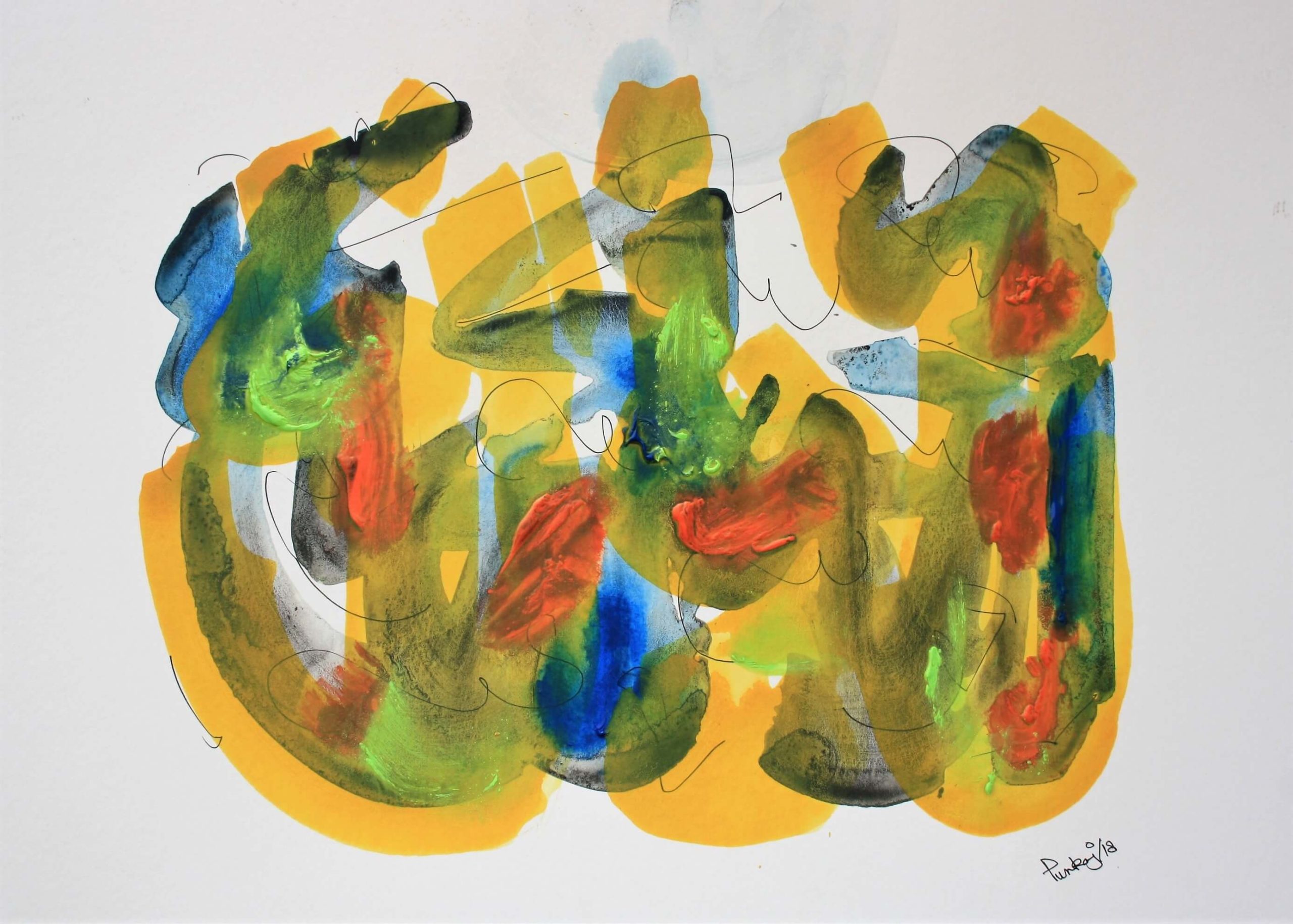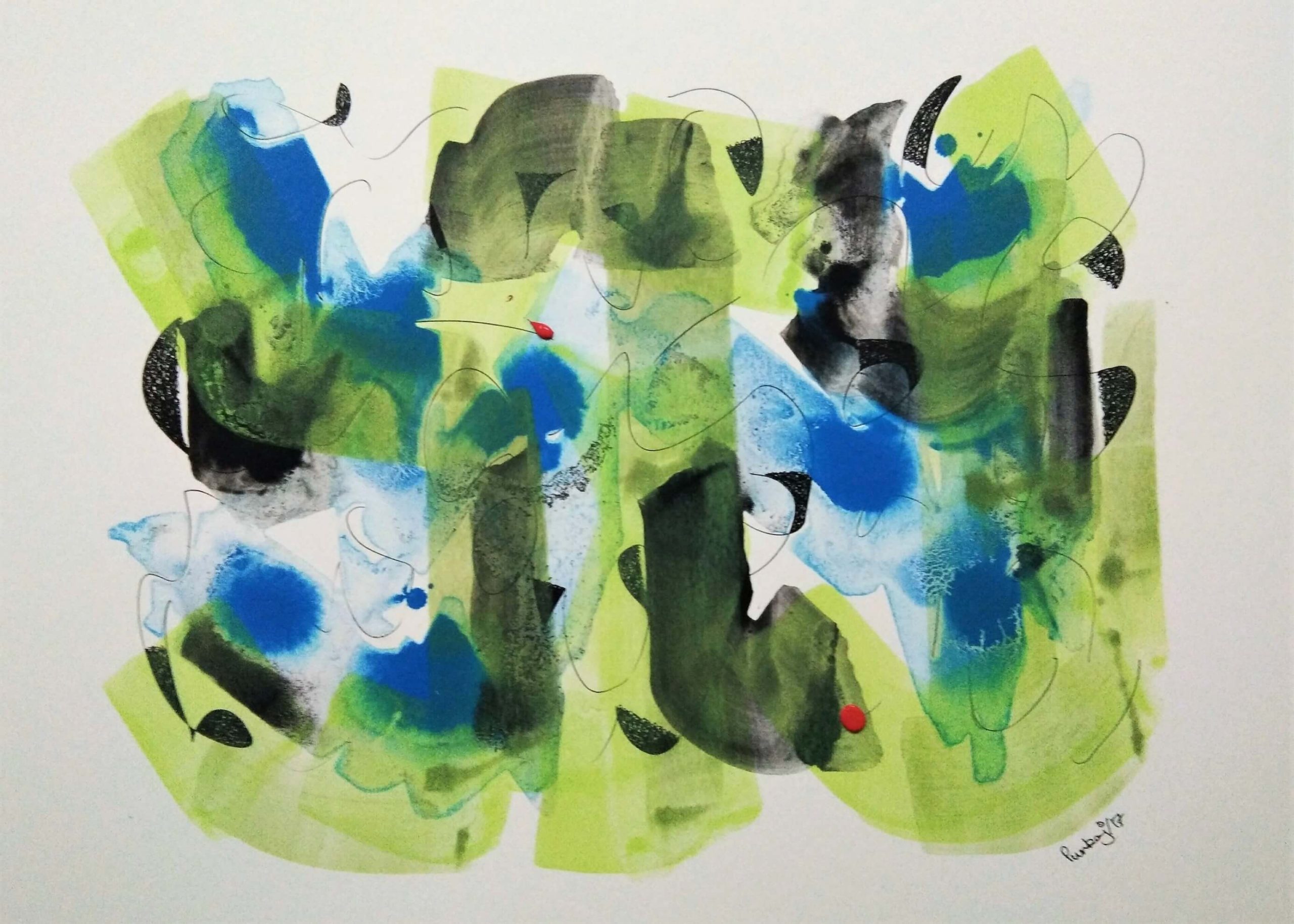Resonating Terrains05 Jan – 15 Jan 2019
Amidst the concrete jungle and dense veil of pollution, our lives thrive with both hope and despair. The occasional urge of meeting the nature, rejuvenating the urban life, might give a temporary sense of pleasure but it does not really solve the growing issue of detachment and displacement of our lives from nature. Not only physical but also a mental rendezvous is an urgent need in our contemporary life style. Manoranjana Herath’s and Punkaj Manav’s works induce such sensibilities that we often lack in our daily life towards nature. They help in extending the horizon of perceiving the nature.
Manoranjana’s work embodies an interesting amalgamation of gestural and geometric abstraction that eventually responds to a deeper interaction with the nature. The pictorial surface replete with texture, patterns and colour drips, imbibe a sense of both chaos and tranquillity. This contradicting character comes from nature itself, which can perfectly embody symmetry and asymmetry in a singular form. The textural forms and patterns come in a poetic interaction with the gestural marks of colour drips. There is a topographic character in Manoranjana’s work where an intriguing assimilation of atmosphere and natural landscape happen. This sensibility can be traced back to his experience of being into the wild in the Sinharaja rainforest in Sri Lanka which exposed and extended the artist’s imagination and perception to a greater extent. There are visible traces of organic forms like leaves, but it organically blends with the rest of pictorial terrain creating an image that derives from both mental and physical experience of nature.
Whereas a spiritual character mixed with a lyrical rhythm creates the body of Punkaj’s paintings, his work has a rhythmic formation that helps in extending the perceptual understanding of the natural world. The fluid forms overlapping each other give a sense of how every element in nature including us are intimately related with each other. The green and blue fluid forms give a sense of landscape yet not a physical space instead a cerebral and spiritual image derived out of artist’s imagination and experience of the nature and the space around him. Certain markers and textural patterns are related to an abstract idea of atmosphere, space and time all fluidly amalgamating with each other creating a space that has the sense of sublime and spirituality.
Both artists bring out an understanding of the nature that is not mere physical, rather spiritual and cerebral in its core. This approach also widens up the perceptual understanding of our own space and time to a great extent. This intention is well defined by Wassily Kandinsky in his writings,
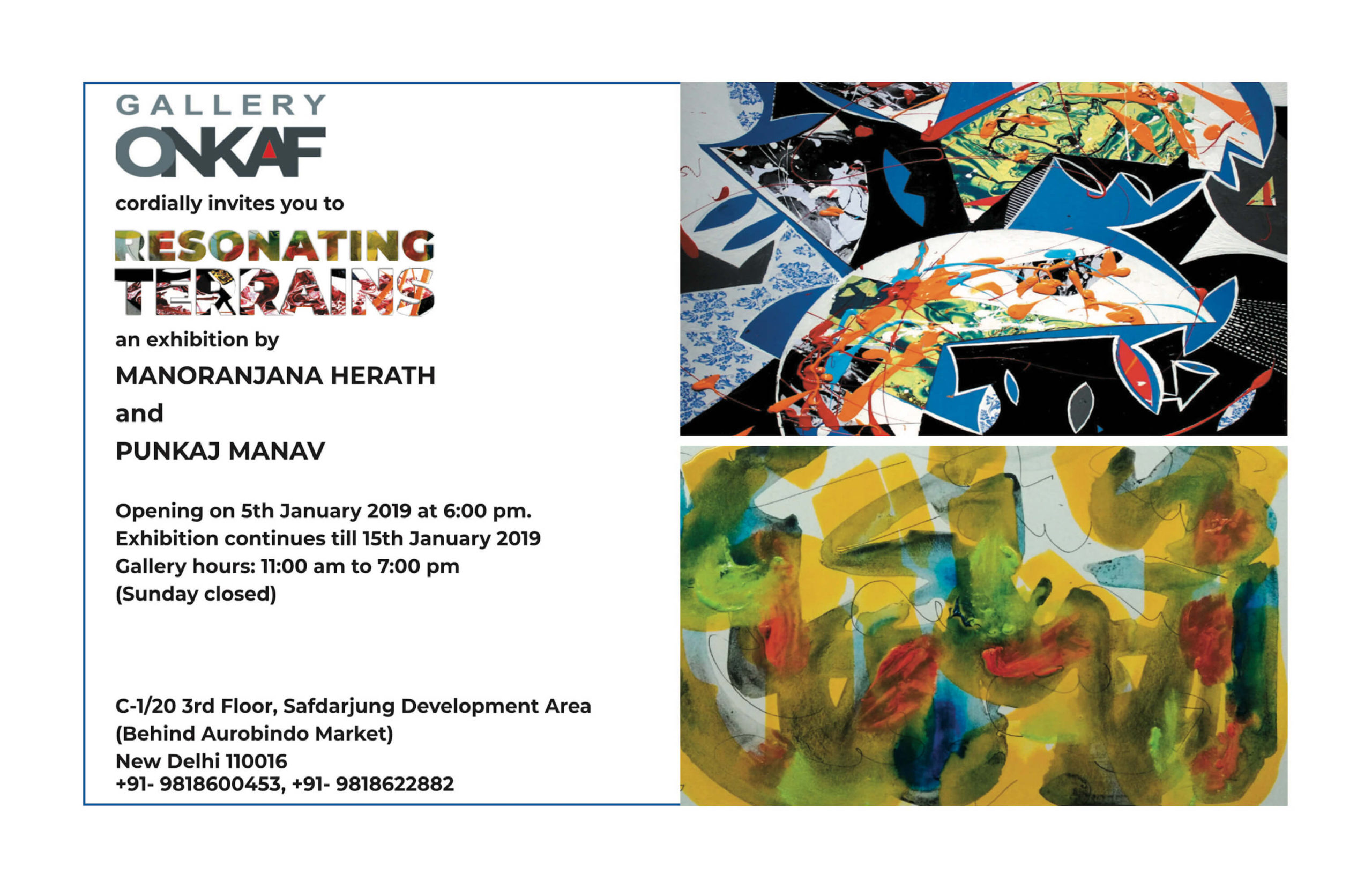
“A painter, who finds no satisfaction in mere representation, however artistic, in his longing to express his inner life, cannot but envy the ease with which music, the most non-material of the arts today, achieves this end. He naturally seeks to apply the methods of music to his own art.”
Manoranjana Herath
(born in Teldeniya, Sri Lanka)
His close observations to the various aspects of the environment directs him to the initial admission for these arts that he has nominated as a rhythm of nature. The close observations to the shapes and patterns of the trees and vines, different textures emerged though the crustaceous trees, different shapes of the rocks and surfaces, the rhythmic patterns of flowing streams and various shapes of different leaves directs me to create my compositions. Study of these various things in nature, although there are many varieties of diversity in between, it is clear that there is a good deal of conjuncture. They are combined with both natural and geometrical shapes. His endeavour was to look at these diversity of shapes, colours and various patterns and rhythms in different angles. Looking closely at the various aspects of nature, it seems that there are many abstract forms and numerous matching. Unless these creations of Manoranjana construct as an approach of abstract creation, it visualizes as a whole. His effort is to combine the essence of nature, rich with different shapes, rhythms, lines, colours and to grasp the delicate rhythmic grip that we do not see at once. It expresses as a visual image.

Punkaj Manav
(born in New Delhi, India)
Punkaj’s work follows continuum; it bears no trace of reference to anything recognizable. Similar to music: an art form which uses the intangible elements of sound and divisions of time. It induces our senses to respond to various stimuli, connecting to deeper aesthetic level. While discussing with him about his work he mentioned the idea that art has spiritual dimension and can transcend ‘every-day’ experience, reaching a spiritual plane. Working towards an ‘objectless state’ he indulges in the occult as a way of creating an ‘inner’ object. With greater freedom and passion he invents his forms which go beyond what we physically experience in nature. Offering much more freedom to his creative process, the possibilities and variations of outcome are limitless. This wide and unbounded freedom might appear to be anarchist on the surface as it provides limitless artistic freedom. The viability and validity of his abstract form lies with him as he carefully develops and expertly orchestrates them in colour and ink. The meticulously worked-over medium evolves into a mystifying object, lovingly and painstakingly made.
